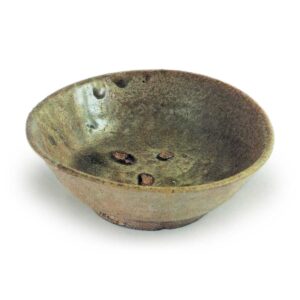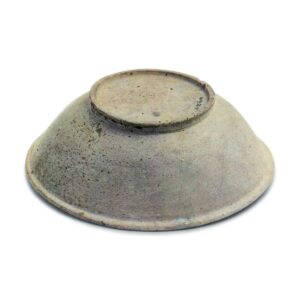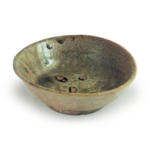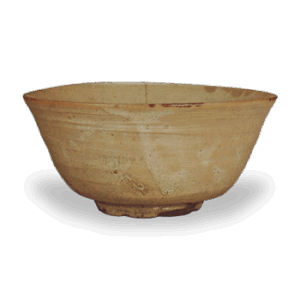

Excavated from Kiln No. 35, Ikurozasa, Miyoshi City, Aichi Prefecture, Japan
9th century
Height 4.9cm, Bowl diameter 14.3-15.2cm, Bottom diameter 7.6cm
Aichi Prefectural Ceramic Museum
The appearance of ash-glazed bowls with a light green glaze on a hard white base was a milestone in the long history of Japanese ceramics. The appearance of Sue ware in Japan, where only red unglazed earthenware existed, must have been even more astonishing. The primitive ash-glazed arms that appeared at the Sanage kiln in Aichi Prefecture in the late 8th century were darker in color, like dark green ash glaze on Sue ware. The brightly colored ash-glazed arms that newly appeared at the Sanage kiln in the 9th century differ in form from the arms on earlier Sue ware.
They were clearly modeled after Chinese celadon and white porcelain bowls.
Not only in form, but also in firing technique, as seen in the trident and other kiln tools, there is no way to leave out the direct influence of Chinese ceramic production techniques. It would not be absurd to link the appearance of these ash-glazed bowls to the Owari-ashi ware produced by “three people from Yamada County in Owari Province, including Nimbu Otsumaro,” as described in Nihon Koki (Nihon Koki). The light yellowish-green ash glaze, which is applied generously to the interior only, and the trifurcated tochin marks for overglaze firing are clearly visible on the prospective surface. This is one of the representative early ash glaze pieces.








